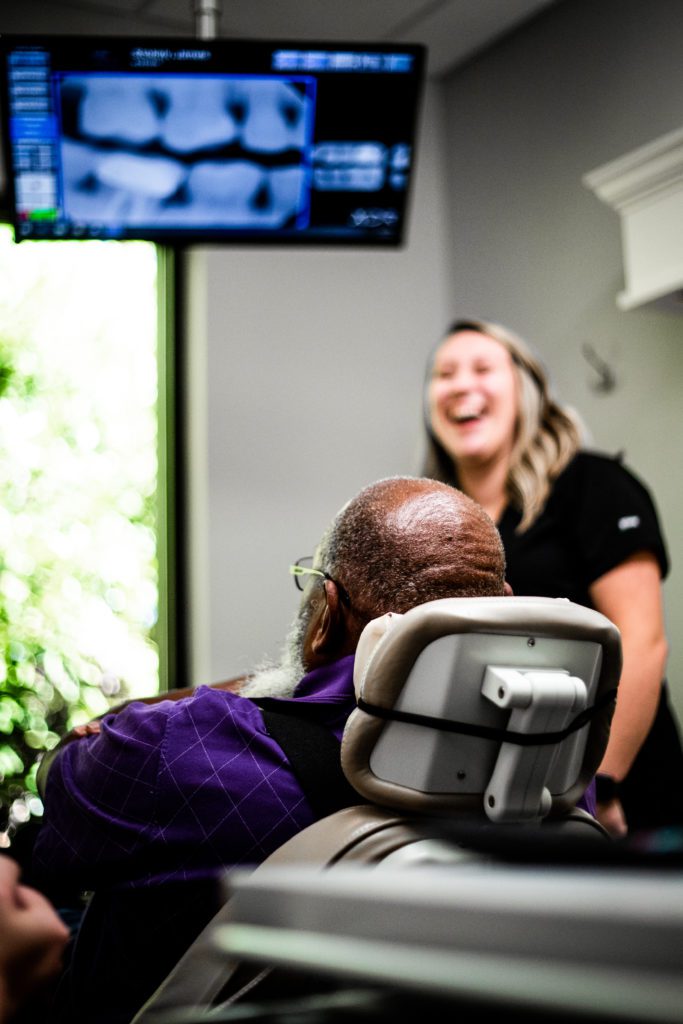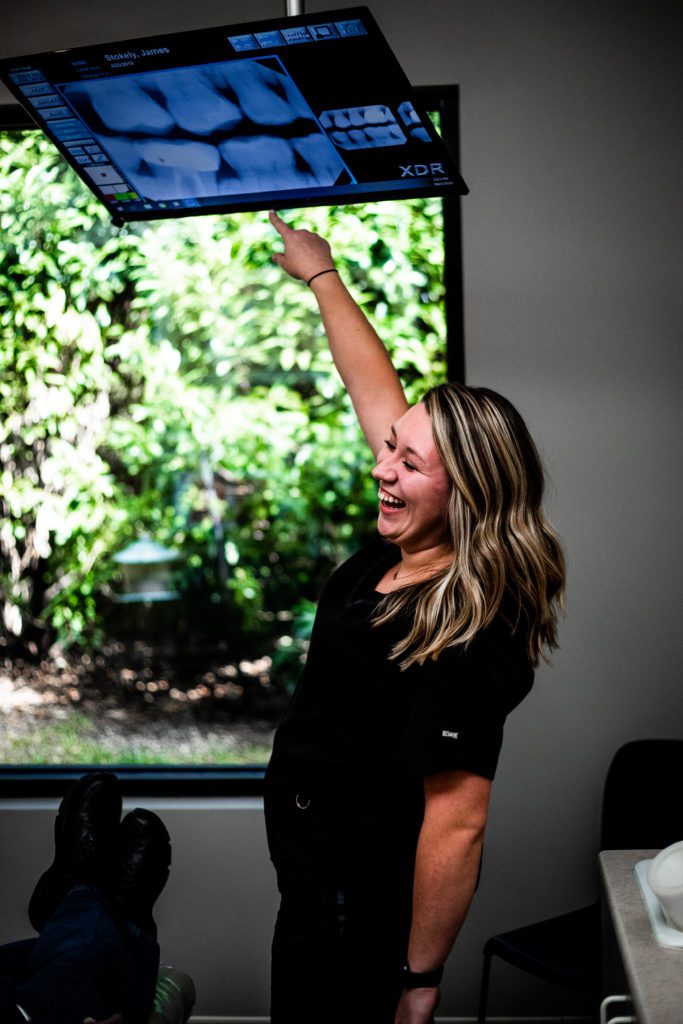Periodontal simply means “the tissue around the teeth.” While many people are familiar with losing teeth due to cavities, one of the most serious problems causing tooth loss today is periodontal disease (gum disease).
How is periodontal disease treated? First of all, similar to other chronic health problems like high blood pressure, it is not “curable” but is often controllable. Early detection is important. We screen for the disease in every patient through examination and charting of the gum and bone levels and an x-ray examination. If disease is present, treatment depends on the progression.
- For mild periodontal disease, non-surgical treatment can be performed which consists of a thorough deep cleaning of the exposed gum and root with scaling and root planing (SRP). SRP is performed by a hygienist under local anesthesia. If SRP is performed early and frequent recare is performed to maintain the gums, we can often slow the disease process significantly.
- For moderate disease, SRP may be performed as well as adjunctive treatments such as locally applied antibiotics and frequent recare visits to monitor progression. Moderate disease can often be treated successfully, but it may progress to more severe disease and require more involved treatment
- For severe disease, we often refer patients to a periodontist. Periodontists are gum and bone specialists and can give patients more options to try to control their disease. Some of these options may include surgery to remove some of the infected gum tissue. Sometimes the disease may be severe enough that teeth need to be extracted and replaced with dental implants, bridges, or removable appliances.
The effects of gum disease can be damaging to your dental health and your overall health. However, through proper preventive care and oral hygiene, you can avoid problems associated with gum disease.
Please contact our office for a periodontal evaluation.

